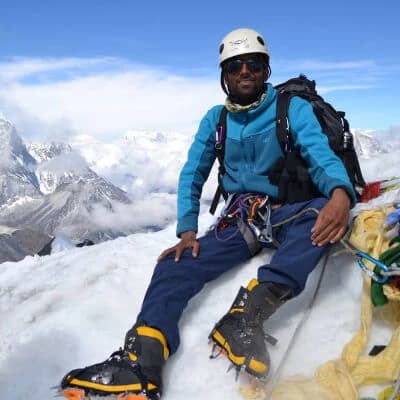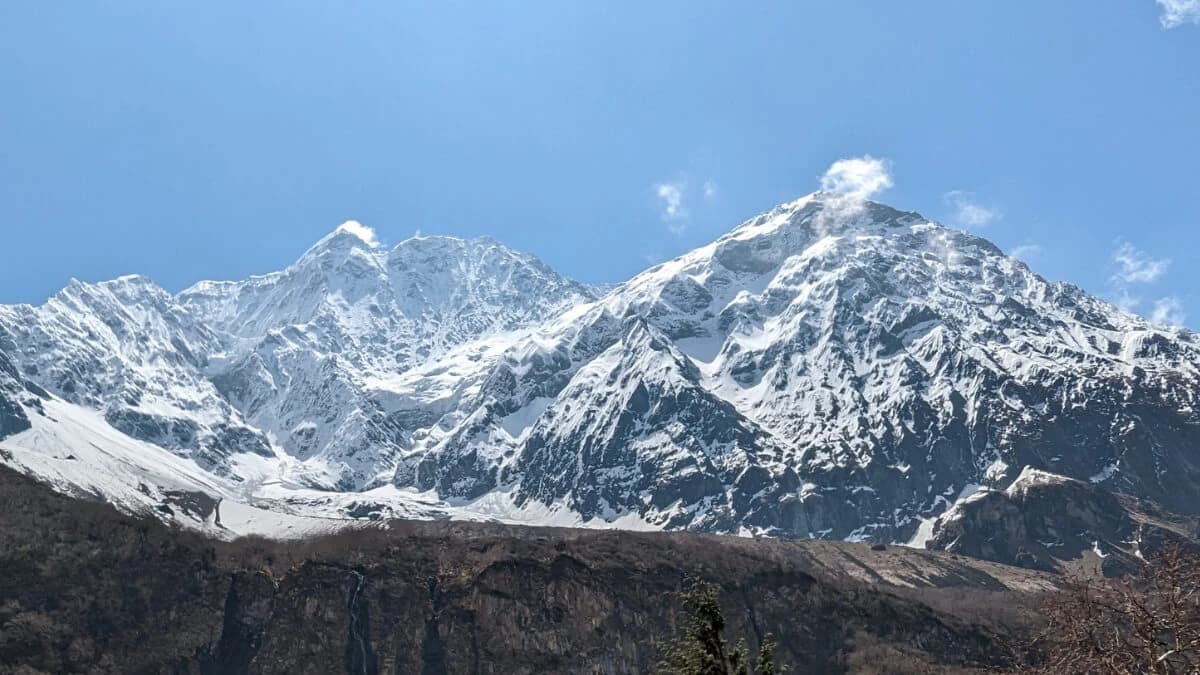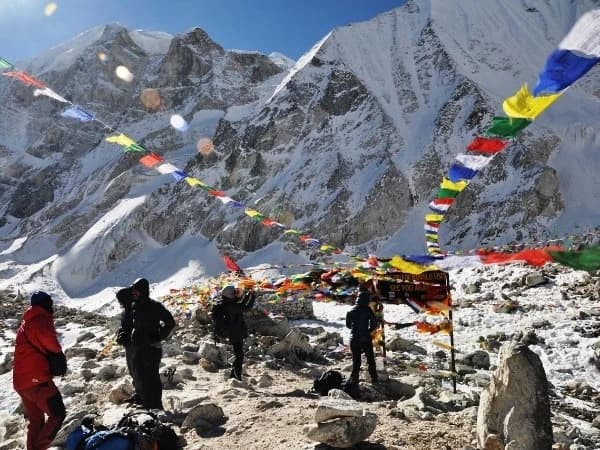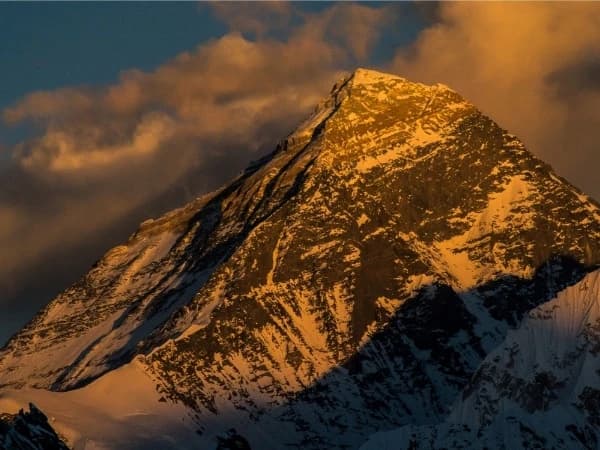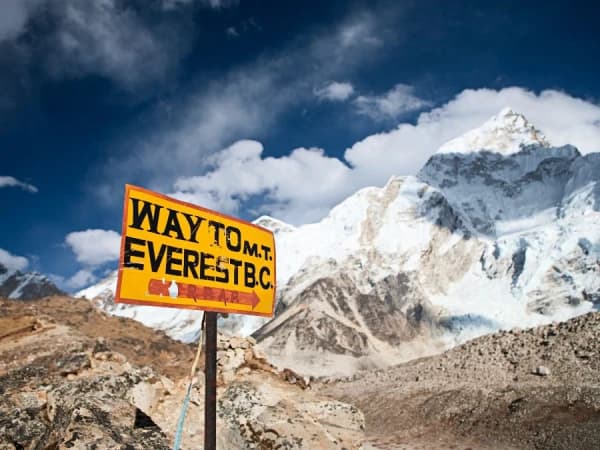"Set out on the Manaslu Circuit Trek, a breathtaking journey through one of Nepal's most pristine Himalayan regions. This comprehensive guide covers detailed itineraries, costs, best seasons, and tips for an unforgettable trekking adventure. Explore the cultural richness of traditional Gurung and Tibetan villages and witness the stunning biodiversity of the Manaslu Conservation Area."
Manaslu Circuit Trek: Complete Guide and Itinerary
What is the Manaslu Circuit Trek?
The Manaslu Circuit Trek, one of Nepal's most stunning and challenging trekking routes, offers adventurers a unique opportunity to experience the untouched beauty of the Manaslu region. Circling the eighth-highest peak in the world, Mount Manaslu, this trek offers stunning landscapes, rich cultural experiences, and a chance to explore one of the few untouched Himalayan regions. In this comprehensive guide, we’ll explore the Manaslu Circuit Trek, delve into the Tsum Valley Trek, and discuss the combined Tsum Valley and Manaslu Trek package, ensuring you have all the information you need for this unforgettable adventure.
Historical Significance of the Manaslu Region
The Manaslu region has a rich history and is culturally significant for the local communities. The "Manaslu" means "Mountain of the Spirit," derived from the Sanskrit word "Manasa," which signifies intellect or soul. The area has been a significant trade route and has many ancient monasteries and cultural sites. The people here have maintained their traditional lifestyle, providing trekkers with an authentic cultural experience.
Why Choose the Manaslu Circuit Trek?
The Manaslu Circuit Trek stands out for its raw, untouched beauty and its relatively less-crowded trails compared to the more popular Everest and Annapurna regions. Here are some compelling reasons to choose this trek:
- Scenic Diversity: From lush subtropical forests to alpine meadows and glacial valleys, the trek offers a rich variety of landscapes.
- Cultural Experience: The trek leads you through traditional Gurung and Tibetan villages, allowing you to immerse yourself in their unique culture and hospitality.
- Challenging Adventure: With high passes like Larkya La (5,160 meters), the trek is perfect for those seeking a challenging adventure.
- Biodiversity: The Manaslu region boasts a rich variety of flora and fauna, including rare species such as the snow leopard and red panda.
- Less Crowded: Unlike the Everest and Annapurna regions, the Manaslu Circuit Trek sees fewer trekkers, offering a more peaceful trekking experience.
Ready for this incredible journey? Check out our detailed Manaslu Circuit Trek package for more information and to book your adventure today!
Comparison with Other Popular Treks in Nepal
While the Everest Base Camp and Annapurna Circuit treks are more popular, the Manaslu Circuit Trek offers a more serene and less commercialized experience. It provides similar stunning views and cultural richness but with fewer trekkers, making it ideal for those seeking solitude and adventure.
Best Time to Trek Manaslu Circuit
The ideal times to trek the Manaslu Circuit are during the spring months of March to May and the autumn months of September to November. During these times, the weather is generally stable, and the views are spectacular. Spring offers blooming rhododendrons, while autumn provides clear skies and mild temperatures.
Detailed Itinerary of the Manaslu Circuit Trek
Day 1: Arrival in Kathmandu (1,400m)
- Arrive in Kathmandu and transfer to the Hotel.
- Briefing about the trek and preparation.
Kathmandu, the capital city of Nepal, is a vibrant and bustling metropolis with a rich cultural heritage. Before beginning the trek, you can explore the city's UNESCO World Heritage Sites, including Swayambhunath (Monkey Temple), Pashupatinath Temple, Boudhanath Stupa, and Kathmandu Durbar Square.
Day 2: Kathmandu to Machha Khola (869m)
- Drive from Kathmandu to Machha Khola.
- Enjoy the scenic drive through rural Nepal.
The drive to Machha Khola takes approximately 8-9 hours, passing through picturesque countryside, terraced fields, and small villages. Machha Khola, located on the banks of the Budhi Gandaki River, is the starting point of the trek.
Day 3: Machha Khola to Jagat (1,340m)
- Continue along the Budhi Gandaki River, passing through villages and terraced fields.
The trail follows the river, with several ups and downs. You will pass through the village of Tatopani, known for its natural hot springs, and continue to Jagat, a checkpoint for the Manaslu Conservation Area.
Day 4: Jagat to Deng (1,860m)
- Enter the Manaslu Conservation Area and witness the changing landscape and culture.
As you enter the Manaslu Conservation Area, you will notice the landscape becoming more rugged and the culture-shifting towards Tibetan influence. The trail takes you through villages like Philim and Ekle Bhatti before reaching Deng.
Day 5: Deng to Namrung (2,630m)
- Pass through lush forests and reach Namrung, a village with impressive views of Siring, Ganesh Himal, and Mount Himal Chuli.
The trek from Deng to Namrung involves crossing several suspension bridges and walking through forests of pine and rhododendrons. Namrung is a beautiful village with traditional stone houses and stunning mountain views.
Day 6: Namrung to Samagaon (3,530m)
- Trek through Tibetan-influenced villages and enjoy panoramic mountain views.
The trail gradually ascends, passing through villages like Lho and Shyala. You will have spectacular views of Manaslu and the surrounding peaks. Samagaon is a large village with a rich Tibetan culture and ancient monasteries.
Day 7: Acclimatization Day in Samagaon
- Discover the village and visit Pungyen Gompa, or take a hike to the Manaslu Base Camp.
To acclimatize, you can explore Samagaon and its surroundings. A popular option is to hike to Pungyen Gompa, a serene monastery with panoramic mountain views. Alternatively, you can trek to Manaslu Base Camp for an up-close view of the majestic peak.
Day 8: Samagaon to Samdo (3,875m)
- A short trek to Samdo, a village near the Tibetan border.
The trek to Samdo is relatively short and easy, allowing you to acclimatize further. Samdo is a small village inhabited by Tibetan refugees, and it offers a unique cultural experience.
Day 9: Samdo to Dharmasala (4,460m)
- Trek to Dharmasala, the last stop before the Larkya La Pass.
The trail from Samdo to Dharmasala (also known as Larkya Phedi) is steep and challenging. Dharmasala is a simple settlement with limited amenities, serving as the starting point for crossing the Larkya La Pass.
Day 10: Dharmasala to Bimthang (3,720m) via Larkya La Pass (5,160m)
- Traverse the challenging Larkya La Pass and descend into Bimthang.
The day begins early as you start the ascent to Larkya La Pass, the highest point of the trek. The climb is strenuous, but the breathtaking views from the past make it worthwhile. Following the pass, you will make your way down to Bimthang, a charming valley embraced by mountain peaks.
Day 11: Trek from Bimthang to Dharapani via Tilije (2,300m)
- Today marks the final day of your trek.
You will descend from Bimthang to Dharapani, passing through charming villages like Gho and Tilije along the way. As you trek, you'll cross suspension bridges and navigate through dense rhododendron forests. Take in the lush greenery, hear the roar of rushing rivers, and admire the picturesque waterfalls that dot the trail.
Day 12: Drive from Dharapani to Kathmandu
- Today, you'll journey from Dharapani to Kathmandu.
The drive starts with a bumpy ride along uneven cliffside roads as you descend to Besisahar. At Besisahar, you'll switch to a more comfortable vehicle and continue on a well-paved road to Kathmandu. Enjoy the scenic views along the way. Once you arrive in Kathmandu, you have the rest of the day at your leisure. In the evening, we may gather for a farewell dinner to celebrate the end of your adventure.
Day 13: Departure from Kathmandu
- Head to the airport for your onward journey.
Before departing, you can explore more of Kathmandu or shop for souvenirs. The city offers a wide range of cultural experiences and activities.
Interested in this adventure? View our Manaslu Circuit Trek itinerary and booking details for more information.

Tsum Valley Trek and Tsum Valley and Manaslu Trek
Overview of Tsum Valley Trek
The Tsum Valley Trek offers a unique glimpse into the secluded and mystical Tsum Valley, known as the "Hidden Valley." Here’s what makes this trek special:
- Cultural Immersion: Experience the rich Tibetan culture, ancient monasteries, and traditional practices.
- Pristine Landscapes: Trek through lush forests, glacial rivers, and alpine meadows.
- Less Crowded: The Tsum Valley sees fewer trekkers, ensuring a peaceful journey.
Cultural Immersion in Tsum Valley
The Tsum Valley is home to several ancient monasteries, including Mu Gompa and Rachen Gompa. Trekkers can fully experience Tibetan Buddhist culture, observe traditional rituals, and engage with the welcoming locals.
Pristine Landscapes of Tsum Valley
The valley is characterized by its stunning landscapes, including verdant forests, gushing rivers, and towering mountains. The trek offers spectacular views of the Ganesh Himal and Shringi Himal ranges.
Tsum Valley Trek Itinerary: Day 1 to Day 4
- Follow the same route as the Manaslu Circuit Trek up to Deng.
Tsum Valley Trek Itinerary: Days 5 to 8
- Diver into the Tsum Valley, visiting villages like Chumling, Chhokangparo, and Mu Gompa.
Tsum Valley Trek Itinerary: Day 10 to Day 13
- Retrace steps back to the Manaslu Circuit route and continue to Syange.
Explore the mystical Tsum Valley with our Tsum Valley Trek package.
Overview of Tsum Valley and Manaslu Trek
Combining the best of both worlds, this trek offers a comprehensive adventure through the Manaslu region and the mystical Tsum Valley. Here’s a brief overview:
- Extended Adventure: A longer trek that covers more ground and offers diverse experiences.
- Cultural and Natural Wonders: Explore both the Manaslu Circuit and the hidden Tsum Valley.
- Challenging and Rewarding: Perfect for those seeking an immersive and extensive trekking experience.
Combined Itinerary: Day 1 to Day 4
- Follow the same route as the Manaslu Circuit Trek up to Deng.
Combined Itinerary: Day 5 to Day 8
- Explore Tsum Valley.
Combined Itinerary: Day 10 to Day 13
- Continue along the Manaslu Circuit route to Syange.
Combine the best of both treks with our Tsum Valley and Manaslu Trek packages.
Preparation, Tips, and Costs for the Manaslu, Tsum Valley Trek
Physical and Mental Preparation
Trekking in the Manaslu region requires both physical and mental preparation. Engaging in regular cardio and strength training exercises is crucial for building stamina. Mental preparation is equally important to handle the challenges of high-altitude trekking.
Before starting the trek, it is recommended to consult with a physician to ensure you are physically fit for the journey. Practicing yoga and meditation can also help in building mental resilience.
Essential Gear and Packing List
- Trekking Boots: Sturdy and comfortable.
- Warm Clothing: Wear layers, including thermal garments.
- Sleeping Bag: Suitable for cold weather.
- Trekking Poles: Provide stability on uneven terrain.
- Personal First Aid Kit: Contains medications for common ailments.
- Water Purification Tablets: Safe drinking water.
- Snacks: Bring along energy bars, nuts, and dried fruits.
Other essentials include a waterproof backpack, a headlamp with extra batteries, a multi-tool, and personal hygiene items. It's crucial to pack light yet ensure you have all the necessary gear for a comfortable trek.
Permits and Regulations
- Manaslu Restricted Area Permit (RAP): Necessary for the trek.
- Manaslu Conservation Area Permit (MCAP): Required for entry.
- Annapurna Conservation Area Permit (ACAP): Required for certain sections.
These permits are available through registered trekking agencies. It is essential to carry multiple copies of your passport-sized photos and your passport for the permit application process.
Cultural and Natural Highlights of Manaslu Tsum Valley Trek
Monasteries and Temples
Visit ancient monasteries like Mu Gompa and Rachen Gompa in the Tsum Valley. Experience the spiritual atmosphere of these sacred sites.
The monasteries are not only places of worship but also serve as centers of learning and community activities. Participating in local festivals and rituals can provide a deeper understanding of the Tibetan Buddhist culture.
Flora and Fauna
Spot diverse wildlife such as blue sheep, Himalayan Thar, and snow leopards. Trek through forests of rhododendron, pine, and bamboo.
The Manaslu Conservation Area is rich in biodiversity, with various species of birds and plants. Spring and autumn are ideal times to witness the blooming rhododendrons and the vibrant colors of the forest.
Scenic Views
Panoramic views of peaks like Manaslu, Himalchuli, and Ganesh Himal. Photographic spots at Larkya La Pass and the Manaslu Base Camp.
The trek offers numerous opportunities for photography enthusiasts. Early morning and late afternoon lights create stunning contrasts and shadows, enhancing the beauty of the landscapes.
Tips for a Successful Trek on Manaslu
Health and Safety Tips
Stay hydrated and maintain a steady pace. Acclimatize properly and recognize symptoms of altitude sickness.
It is advisable to drink at least 3-4 liters of water daily. Avoid alcohol and caffeine because they can cause dehydration. Eating a balanced diet with plenty of carbohydrates can help maintain energy levels.
Altitude Sickness Prevention
Ascend gradually and take rest days for acclimatization. Steer clear of alcohol and caffeine, as they can cause dehydration.
Altitude sickness can impact anyone, no matter their fitness level. Symptoms may include headaches, nausea, dizziness, and shortness of breath. If these symptoms worsen, it is essential to descend to a lower altitude and seek medical attention.
Local Customs and Etiquette
Honor local customs and traditions, and always ask for permission before photographing people or religious sites.
The residents of the Manaslu region are renowned for their hospitality and kindness. Learning a few basic phrases in Nepali or Tibetan can improve your interactions and demonstrate respect for their culture.
Costs and Budgeting
Manaslu Circuit Trek Cost
The cost of the Manaslu Circuit Trek varies depending on the package and services included. Typically, you can expect to spend between $1,000 to $1,500.
This cost typically includes permits, guide fees, accommodation, and meals. Additional expenses may include gear rental, travel insurance, and personal expenses.
Tsum Valley Trek Cost
The Tsum Valley Trek is slightly more expensive due to its remote location. Costs range from $1,000 to $1,800.
Given its remoteness, the cost covers logistical support, transportation, and accommodation in basic teahouses. It is essential to carry extra cash for unforeseen expenses.
Tsum Valley and Manaslu Trek Cost
Combining both treks, the cost ranges from $1,600 to $2,400, depending on the duration and services.
This comprehensive package includes all necessary permits, guided tours, accommodation, and meals. Some packages may also offer cultural experiences and additional side trips.
Affordable Manaslu Trek Packages
Look for packages that offer group discounts or off-season rates to save money.
Traveling in a group can significantly reduce costs. Additionally, some trekking agencies offer discounts during the off-season, although it is essential to be prepared for varying weather conditions.
Budgeting for Manaslu Region Treks
Include costs for permits, gear, accommodation, and food. Plan for extra expenses for personal items and tips.
It is advisable to keep some extra cash for emergencies and tips for guides and porters. Trekking insurance that covers high-altitude trekking is highly recommended.
Conclusion
The Manaslu Circuit Trek is a hidden gem in Nepal's trekking offerings, promising an adventure through diverse landscapes and rich cultural experiences. Whether you opt for the Manaslu Circuit, the Tsum Valley Trek, or the combined Tsum Valley and Manaslu Trek, an unforgettable journey awaits you. Book your trek today with Recreation Holidays and experience the magic of the Himalayas.
For customized trekking packages and more information, contact us. Our team is ready to help you plan the perfect adventure customized to your needs.

